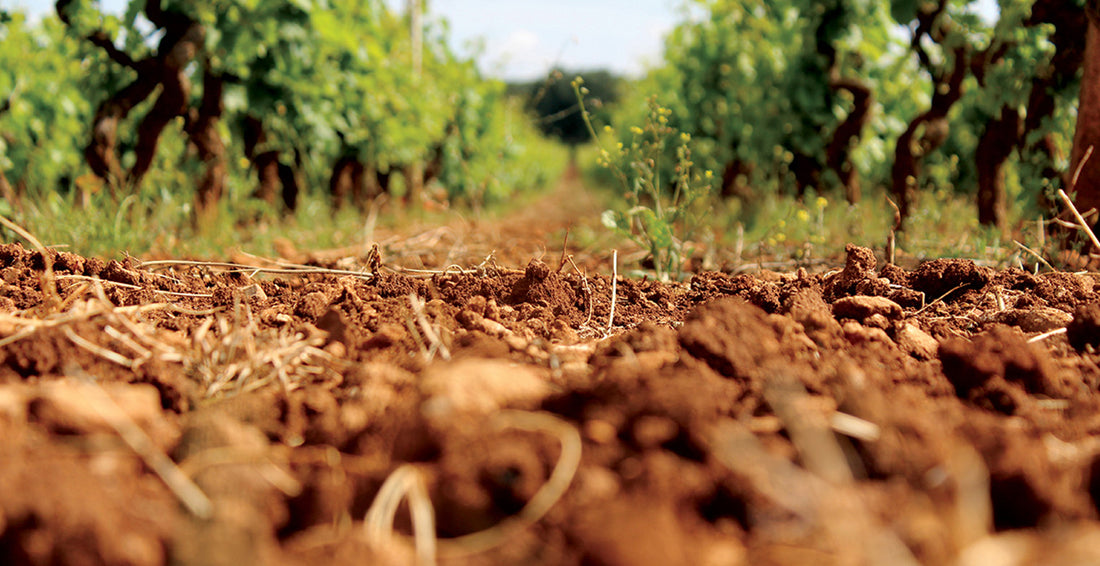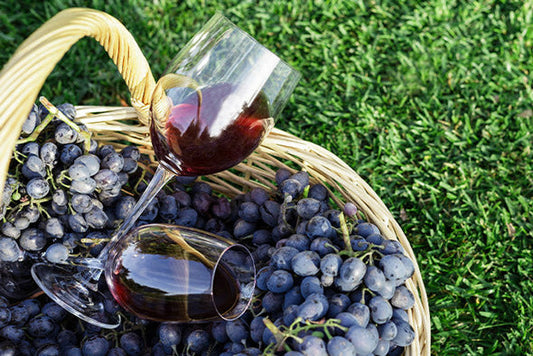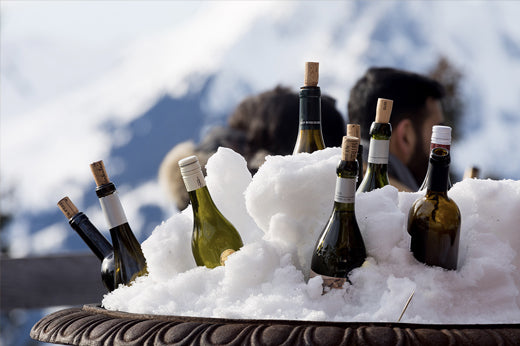
Planting a Vineyard: Does Soil Matter?
Thinking about planting a vineyard? Then, you probably want to know about soil. Does soil matter when planting a vineyard?
The simple answer is no. Grapes can pretty much grow in any soil. Wild and cultivated grapevines grow around the world. You can make wine from any grape grown in any soil. Wine is just an alcoholic fermented version of grape juice made for human consumption.
BUT, if you want to make wine someone else wants to drink and pay for, then the simple answer is yes. But, the concept is more complicated.

Soil Matters
So, what’s the fuss over soil these days? Restaurant wine lists now include the soils in which the grapes were grown. Is this another sommelier geek-out or just another marketing angle?
While there is controversy over the idea that you can taste or detect soil in a wine, soil does indeed have some influence on the quality of a wine.Let’s take a look at how soil impacts the quality of wine.
A Skip Through the Wine Timeline
Humans have been growing and transporting grapevines and making wine for a very long time.
Apologies to the Republic of Georgia and the other Near and Middle Eastern countries with ancient winemaking histories, but we’ll pick up the story in Europe.
Romans made wine from native Italian grapes and carried their vines with them as they conquered Europe, planting them everywhere. Wine was part of the soldiers’ daily rations. Wine not only augmented meals, but was integral to their Catholic church services.
As man cultivated wine over time, more thought went into the process.
Burgundy’s monks spent hundreds of years documenting Burgundy’s soils and the resulting wine. As the monks planted the same vines in a variety of soils and made wine, they learned that wines differed depending on the soil. The concept of terroir was born.
Fast forward thousands of years and you find grapevines and winemaking in dozens of countries, all with different soils.
According to Jancis Robinson, there are around 10,000 grape varieties throughout the world today. Each one contains flavor and aroma compounds in various combinations and are impacted by the soils in which they grow.
In 2017 world wine consumption was 24 billion liters accounting for $29 billion in revenue to wine producers. This number doesn’t include sales at the importer, distributor, wholesale or retail levels.

What Grapevines Need to Thrive
Grapevines need certain conditions to thrive and to produce the fruit to make high-quality wine.
The basic needs for a grapevine to flourish include:
- Soils in which the vine can secure itself
- Enough, but not too much, water
- The right balance and composition of nutrients
- Sunlight for photosynthesis and ripening the grapes
While soils can impact a grapevine’s productivity and fruit production, the full impact is impossible to isolate from all the other factors contributing to a wine’s quality. But it is generally understood that grapes for fine wine need more stringent conditions to develop depth of flavors and aromas.
Soil is an essential element because it holds the plant and supports its access to water and food (nutrients.)
When you think of soil, you might be thinking of your garden and the topsoil at the surface. The roots of most agricultural plants stay closer to ground level for easier access to water. Table grapes and mass-produced grapes for wines that are mass-consumed are made this way.
Grapes for fine wine need more stringent conditions to develop depth of flavors and aromas. The soil is an essential element because it holds the plant and supports its access to water and food (nutrients.)
But a shallow root system doesn’t work for growing the grapes needed to produce fine wine. A shallow root system results in shallow wine, meaning that the quality of the grapes suffers if the roots stay at the surface.
A deeper root system helps regulate the appropriate balance of water and nutrients at the right time during the growing season, producing better quality grapes.
For example, vines growing in rocky, well-draining soil tend to deliver grapes that are riper and more concentrated, while soils that hold a lot of water, such as clay, can create grapes with more diluted flavors and aromas.
An odd note: You can grow grapes in a hydroponic system!

How Soil Impacts Wine Quality
Because grapevines grow in soil, the type of soil contributes to the resulting fruit from the vine, including sugar levels. Productive soils produce healthy vines due to strong nutrient uptake but may result in less healthy fruit because the nutrients go into the vine instead of into the fruit.
For quality wine, the plant needs to spend most of its resources on growing grapes, not vines.Let’s consider different aspects of soil:
- Composition – physical factors including type, temperature (color/heat retention), particle size, organic matter, pH
- Water absorption
- Nutrients/microbes – chemicals, yeasts, bacteria
- Plant competition – from cover crops or other grasses or plants
- Viticultural practices - rootstock choice
- Environmental practices including pest management
One of the primary purposes of soil is to give vines stability, a place to put down roots and grow. Grapevines must have proper support for the growth needed to hold the bunches.
Plant growth must be controlled for fine wine. The plant should not over- or under-produce. Some call this the “Goldilocks” effect: every factor must be just right. If there is too much or too little growth, quality can suffer due to the impact on:
- yields
- ripening ability
- color, sugar, and tannin levels
- yeast development
- the balance of flavors and aromas in the berries
Of course, with any soil holding grapevines, water and nutrients can be managed by the grower, thereby mitigating limitations placed by nature.
Growers can enhance vineyards soils by planting cover crops between rows of vines. These crops can reduce erosion and run-off and suppress weed growth. Effective management of cover crops protects the soil.
The rootstock of the vine grows in the soil, not the vine itself. Not all rootstocks take to all types of soil, so rootstock choice matters.

Soil and Water Relationship
When considering planting a vineyard, the grower must determine water access and control during each stage of the plant’s growth.
The way soils interact with water contributes to fruit quality. Some water stress helps grapes develop more concentrated flavor compounds and thicker skins for stronger tannins.
But, having too little water reduces plant and fruit development resulting in low production with unbalanced berries high in sugar and low in acidity.
The soil composition helps determine water absorption in the roots of the vine. It also interacts chemically with surrounding nutrients to provide food for the plant.
For wine grapes, soils that mitigate extremes of water and nutrients provide optimal conditions. Rockier subsoils, with some topsoil, tend to have these conditions.
Different Soil Types for Wine Grapes
Sand
Soils with high sand content are very porous, water drains right through, a benefit for the vine. But sandy soils can lose too much water, and supplementation might be needed. The dreaded Phylloxera pest cannot survive in high content sandy soils, another distinct benefit.Examples: Barolo in the Piedmont region of Italy; Medoc region of Bordeaux
Clay
Soils with a good amount of clay remain cooler during hot weather and hold water well. When the roots stay cooler, the grapes tend to retain more acidity. Too much clay, though, will stop the vine from searching deeper for water and the roots could stagnate. Clay soils tend to be rich in nutrients.Examples: Pomerol in Bordeaux; Barossa Valley in Australia
Silt
This soil type sits between sand and clay and allows water to easily pass through. Some silt-based soils are acidic, with pH levels around 5 (more on pH later.)Examples: Eastern Washington State; parts of Austria
Loam
Loam is a mix of each of the above soils, plus some amount of humus (organic matter.) Depending on the mix, loam can be called clay loam or sandy loam. Soils with humus have more nutrient capacity and can be overly fertile. They may also harbor unfavorable bacteria.Examples: Sonoma and Napa Valleys (valley floor)
Chalk
Chalk (calcareous) tends to sit atop limestone, contain high levels of calcium carbonate from decomposed shells, and have an alkaline pH between 7 and 8. Sometimes found with a mix of clay, it tends to drain well.Examples: Burgundy (especially for white wine); Adelaida District of Paso Robles
Stony
Stony soils support water run-off, are less nutrient-dense, and limit growth resulting in lower yields and more concentrated fruit.Examples: Chateneuf-du-Pape with large “galettes”; Pessac-Leognan in Bordeaux with petit “pebbles” or “cos”.
Volcanic
Volcanic soils contain fine grains, hold heat and water, but drain well. They are rich in minerals such as iron, calcium and potassium.
Examples: Slopes of Mt. Etna, Italy; Santorini, Greece
The vine needs only a small amount of nutrient-dense humus; hence there is little need for deep topsoil for wine grape growing. Soils with too much humus result in excessive growth at the expense of quality berries.
Some soils contain small or large rocks that can help the soil retain heat in a cooler site. Some soils encourage specific harmful insects or other pests that growers must manage.
In Santa Barbara County, where Martellotto Winery is located, there are many different soils from limestone to crumbly sedimentary rocks to clay and loam (a combination of sand and silt.) With such distinct soils, the County supports a diversity of grape varieties and a wide range of wines.

Soil Profile
Because finding, purchasing, and planting a vineyard is extraordinarily expensive and time-consuming, finding the right site is paramount. Beyond soil, the site must have other crucial factors, including certain natural features, a water source, and favorable climatic conditions.
The process of finding a suitable site should also include vineyard design. Before planting a vineyard, growers often contract for a “soil profile.”A soil profile analyzes a vineyard site by taking deep soil samples from around the site. By analyzing the layers of the samples, soil scientists can define the site’s profile, identify areas of concern, and determine which varieties might grow best at each location.
Knowing the in-depth profile of the soil allows a grower to understand how the vine will mature. Because the roots of vines can grow very deep, up to 15 feet or beyond, each change in soil impacts the vine because of the nutrient combination and water capacity of each layer.
Most plants are susceptible to changes in nutrient levels and will experience different reactions when grown in multiple soils.
Some people believe older vines provide more complexity because the roots grow so deep through many distinct soil layers, but there is no empirical evidence.
Plant Food - Feast or Famine
Grapevines regulate the amount and timing of the nutrients it delivers throughout the season. Where the nutrients come from may not matter.
While it remains up for debate whether it makes any difference in the final product if nutrients come from the soil or are manually introduced, the plant will take them up either way.
Nutrient delivery in plants is like food with people: too much promotes excess growth, while too little inhibits development.
Grapevine food comes in the form of chemical elements. There are 14 elements the vine needs, including oxygen, hydrogen, and carbon. Let’s look at a few:
Nitrogen: Essential for growth, but, as with water, only the right amount will do. Too much or too little will have negative consequences. Nitrogen and phosphorus come from organic matter.
Potassium: Without enough potassium, grapes will not ripen. Impacts pH.
Boron, iron, zinc, copper, magnesium, phosphorus: These are needed in trace amounts. Affected by pH level.
Lime & Calcium chlorate: Calcium is required for healthy growth but lack of balance risks toxic iron chlorosis.
Salt: Too much salt in any soil will result in weak growth.
pH level: pH impacts the ability of vines to absorb nutrients but can be amended. Grapes grown in soils with higher pH levels may be more susceptible to bacteria.
Aluminum: Low pH soils tend to contain high amounts of aluminum, which can be toxic to vines.
Nutrient poor soil is typically best suited for growing grapes to make fine wine. Dark, rich soil, while excellent for most fruits or vegetables, is contraindicated for fine wine grapes

Soil Matters When Planting a Vineyard
You can see the impact of soil in wine is not straight-forward. While climate and weather may have more direct and dramatic influence, grapevines live in soil, so the vine and its fruit cannot be separated from it.How growers farm a vineyard, how the fruit is harvested, and how a winemaker manages wine production all contribute to making quality wine.
Grapes can grow in any soil and soils can be amended and managed. Quality wine can be made from fertile soil or poor soil. In fact, most vineyards are actively plowed, dug, irrigated, and fertilized.
At the core, vines need water, sunlight, nutrients, and soil. The combinations of these factors result in the quality of the wine, for better or worse.
There are other factors to consider. Environmental concerns top the list. The wide-spread use of chemicals and other artificial soil and pest and weed control treatments have led some vineyards toward organic and biodynamic viticulture.
Improving soil conditions may have the most impact in the face of climate change.
Increases in extreme weather activity will certainly impact vineyards and soil can help mitigate some of the impacts. Soils can take up and hold carbon and healthier soils can better withstand bouts of drought or deluge. Many vineyards are now dry-farmed, for example.
While an ideal soil may not exist, the importance of soil for wine grape growers does matter. A grower must understand the soil in the vineyard to achieve the results desired in the wine.
Take a close look the next time you see soil listed on a restaurant wine list.





